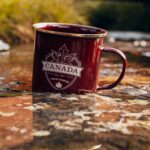Table of Contents
- The Enigmatic ‘Eh?’: Unpacking Canada’s Most Cherished Expression
- Your Ultimate Timmies Run: Decoding ‘Double-Doubles’ and Other Daily Lingo
- From ‘Toques’ to ‘Toonies’: An Essential Glossary for Navigating Canadian Life
- Key Canadian Slang for Newcomers: Essential Takeaways
- Frequently Asked Questions About Canadian Slang
Integrating into a new country involves more than just navigating the legal and professional landscapes; it requires an understanding of the local culture and its unique forms of expression. For newcomers to Canada, deciphering the local Canadian slang is a crucial and often amusing part of the settlement journey. These expressions, or ‘Canadianisms,’ are deeply woven into the fabric of daily life, reflecting the nation’s history, politeness, and sense of humour. Mastering a few key terms can significantly enhance communication, foster connections with locals, and provide a deeper appreciation for the Canadian identity. This guide serves as a professional resource for understanding the most common Canadian slang, ensuring a smoother and more confident transition into Canadian society.
The Enigmatic ‘Eh?’: Unpacking Canada’s Most Cherished Expression
Perhaps no other word is as famously associated with Canada as ‘eh’. Often stereotyped and parodied, ‘eh’ is a remarkably versatile and sophisticated linguistic tool that serves multiple functions in conversation. Far from being a simple verbal tic, it is a nuanced part of the Canadian vernacular that newcomers will encounter daily. Its primary function is to seek confirmation or agreement, similar to saying “right?” or “don’t you think?” at the end of a sentence. For example, one might say, “It’s a beautiful day, eh?” inviting the listener to concur. This usage fosters a sense of inclusivity and politeness, turning a declarative statement into a collaborative observation. Beyond confirmation, ‘eh’ can also express surprise or disbelief, as in, “He won the lottery, eh?” or be used to punctuate a story, encouraging the listener to remain engaged. Its flexibility allows it to soften commands, turning “Open the window” into the more polite suggestion, “Open the window, eh?”. For anyone new to Canada, learning to recognize the context of ‘eh’ is a vital step in understanding the subtleties of Canadian communication. It signals a friendly, non-confrontational approach to conversation that is central to the country’s social etiquette.
Your Ultimate Timmies Run: Decoding ‘Double-Doubles’ and Other Daily Lingo
A significant portion of Canadian slang revolves around everyday routines, and none is more iconic than the coffee run to Tim Hortons. Affectionately known as ‘Timmies,’ this coffee and donut chain is a cultural institution. Understanding the specific terminology is essential for a successful transaction. The most famous order is a ‘double-double,’ which simply means a coffee with two creams and two sugars. Ordering this way is a quintessential Canadian experience. The menu has its own lexicon, with small donut holes called ‘Timbits’ being another popular item. Beyond the coffee shop, other daily expressions are critical. When asking for the restroom, Canadians almost exclusively use the term ‘washroom.’ You will rarely hear ‘restroom’ or ‘bathroom’ in public spaces like malls or restaurants. Another key area is clothing and currency. A winter hat is universally called a ‘toque’ (pronounced ‘took’). Footwear, specifically athletic shoes or sneakers, are often referred to as ‘runners.’ These terms are so commonplace that using their American or British equivalents might momentarily confuse a listener. Embracing this daily lingo is not just practical; it is a sign of successful integration and shows an appreciation for the subtle distinctions that define Canadian culture. These words are the building blocks of daily interaction and a gateway to feeling truly at home.
From ‘Toques’ to ‘Toonies’: An Essential Glossary for Navigating Canadian Life
Navigating financial transactions and social interactions in Canada becomes much simpler with a grasp of some specific Canadian slang. The currency, in particular, has a set of beloved nicknames. The Canadian one-dollar coin is called a ‘Loonie’ because of the image of a loon, a common Canadian bird, on its reverse side. Following this tradition, the two-dollar coin was logically nicknamed the ‘Toonie’ (or ‘Twonie’). These terms are used universally, from corner stores to banks, and are an indispensable part of the financial vocabulary. In social settings, a bit of light-hearted slang can go a long way. A ‘hoser’ is a mild, affectionate insult for someone who is unsophisticated or oafish, often associated with classic Canadian stereotypes. It’s a playful term, rarely used with genuine malice. On the culinary front, one cannot discuss Canadian culture without mentioning ‘poutine.’ This famous dish, originating from Quebec, consists of french fries and cheese curds topped with a brown gravy. Understanding and correctly identifying these terms demonstrates a level of cultural fluency that is highly valued. It shows that a newcomer has moved beyond basic language skills and is actively engaging with the cultural nuances that make Canada unique. From paying for a coffee with a Toonie to enjoying poutine with friends, these words are integral to the Canadian experience.
Key Canadian Slang for Newcomers: Essential Takeaways
To help simplify the learning process, it is beneficial to have a quick-reference list of the most critical Canadian slang expressions. Understanding these terms will provide a solid foundation for navigating everyday conversations and integrating more smoothly into Canadian life. Each term carries a piece of Canadian culture, from its politeness and love of coffee to its unique sense of humour.
- Eh?: A versatile word used at the end of a sentence to ask for confirmation, express surprise, or encourage a response. It is a hallmark of Canadian politeness.
- Loonie & Toonie: The official nicknames for the Canadian one-dollar and two-dollar coins, respectively. Essential for any cash transaction.
- Double-Double: A coffee with two creams and two sugars, most famously from Tim Hortons (‘Timmies’).
- Toque: A knitted winter hat. The term is used almost exclusively in Canada.
- Washroom: The common Canadian term for a public restroom or bathroom.
- Runners: A common term for athletic shoes or sneakers.
- Hoser: A mild, friendly insult for an unsophisticated person, often used humorously.
- Poutine: A classic Canadian dish made of french fries, cheese curds, and gravy.
- Timmies: The affectionate and widely used nickname for the Tim Hortons coffee shop chain.
Frequently Asked Questions About Canadian Slang
What does ‘eh’ really mean in Canada?
In Canada, ‘eh’ is a versatile conversational tag used to seek agreement, confirm information, or express surprise. It functions much like “right?” or “don’t you think?” and is considered a polite and inclusive way to engage others in conversation.
What is a ‘double-double’ in Canada?
A ‘double-double’ is a very popular Canadian coffee order, meaning a coffee prepared with two servings of cream and two servings of sugar. The term is most famously associated with the Tim Hortons coffee chain.
Why is the Canadian dollar coin called a ‘Loonie’?
The Canadian one-dollar coin is called a ‘Loonie’ because it features an image of a common loon, a well-known Canadian bird, on one of its sides. This nickname became so popular that the two-dollar coin was subsequently named the ‘Toonie’.
What does it mean to call someone a ‘hoser’?
Calling someone a ‘hoser’ in Canada is a mild and often affectionate insult for a person who is considered unsophisticated or foolish. It’s a playful term rooted in Canadian humour and is rarely used with serious intent.
What is a ‘toque’ in Canadian slang?
In Canadian slang, a ‘toque’ (pronounced ‘took’) is a knitted, close-fitting winter hat or beanie. This term is uniquely Canadian and is the standard word used to describe this type of winter headwear across the country.
Talk to us to find out more. ->
The content above is not intended to provide legal advice or opinions of any kind and may not be used for professional or commercial purposes.






